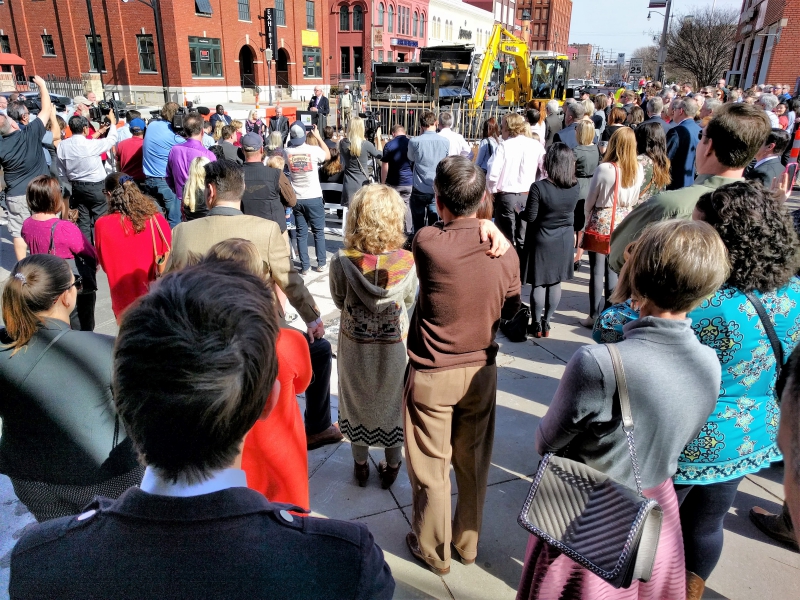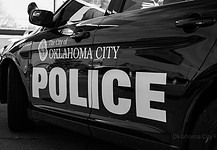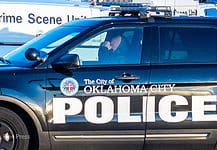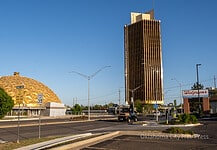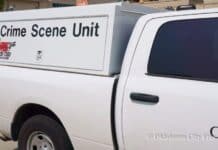Last Updated on February 8, 2017, 4:29 PM | Published: February 8, 2017
Tuesday a crowd larger than usual for a groundbreaking attended the start of construction for the MAPS 3 streetcar track line for Oklahoma City.
Enjoying the good fortune of a sunny day with temperatures in the 70s, city officials, staff, supporters and the curious came to a spot near the railroad tracks and East Sheridan in Bricktown to watch the groundbreaking.
Mayor Mick Cornett described the streetcar system as “one of the most ambitious projects in Oklahoma City history.”
Praise
The Mayor and other city leaders praised Oklahoma City voters for passing MAPS 3 which is funding the streetcar line. And those who had put in many hours of work volunteering for the idea were visibly happy to see construction begin.
“The auto-centric lifestyle that we have created for ourselves has created a very unhealthy environment,” said Cornett. He pointed to the streetcar project as a way back to more walking and mass transit use.
The city had streetcars five years before statehood. The last streetcar was taken offline in 1947. Since then the system has only used busses operating through a central downtown hub.
Cornett thanked those present and the voters of Oklahoma City for voting in MAPS 3 in 2009.
The line is being paid for from cash raised with the one-cent sales tax voters agreed to when they passed MAPS 3.
Other dignitaries had similar praise for the arrival of an idea that has been in process for over a decade.
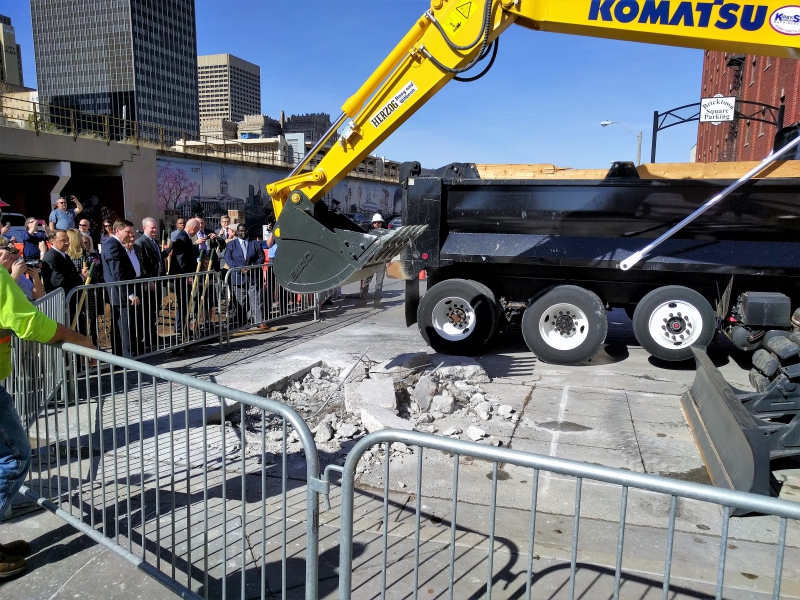
Reassurances
Ward 6 Councilwoman Meg Salyer, whose ward will contain the longest of the two lines to be built, spent most of her time assuring merchants who may be nervous about how heavy construction will affect their bottom line.
“The rail line will be built in 350 foot segments…,” said Salyer. “That’s how long a single stand of the rail is. We’re really going to try to break this down into manageable bites and hopefully the pain for all of us that on this line will be limited.”
After the ceremony, Free Press asked Salyer about the section-by-section construction.
She said the project is going to be “incredibly exciting and a little painful as we build the tracks.”
“At this point we have a ton of experience,” Salyer said. “And Project 180 taught us a lot about what not to do.”
She said the city has learned from the struggles with Project 180 that “you cannot tear up three corners of a street at the same time and you need to do everything in your power to keep traffic moving.”
“And people who are laying the track – doing the work – have also done this in cities all over the country. So, they bring their own set of experiences,” Salyer said.
Project 180 is a $176 million city and federal collaboration to redesign parks, plazas, streets and sidewalks in the core of Oklahoma City.
Arrival
Jeff Bezdek, long-term volunteer promoter of a rail system, was not doing any kind of civic leader version of spiking the ball in the end zone. Instead, he seemed calm, relieved and proud to be at the groundbreaking.
He does audio/video installations for a living, but he is best known in public for passionately volunteering to promote the streetcar for over a decade.
The hardest part about promoting the streetcar?
“It was easy for the public, but it was hard for the leadership,” Bezdek said. “I just think that they didn’t think that mass transit was worth investing in.”
He told Free Press after the ceremony that the process had taken nine years. But that was just the formal part.
Bezdek had been one of the volunteers who promoted public meetings exploring what fixed rail systems Oklahoma City might need as far back as 2005.
But being a civic volunteer did not always have the same warm rewards for Bezdek.
The streetcar idea itself wasn’t universally popular and questions persisted about the routes and how much or little they would help people who lived beyond downtown.
In 2014 he endured the heat of a rancorous election fight for mayor between sitting Mayor Mick Cornett and Councilman Ed Shadid.
As disagreements over the streetcar idea intermingled with election politics, accusations toward Bezdek were investigated by the city auditor who found no wrongdoing.
The pain of those circumstances was evident in a YouTube video he posted of his appearance before the council the day before the 2014 election.
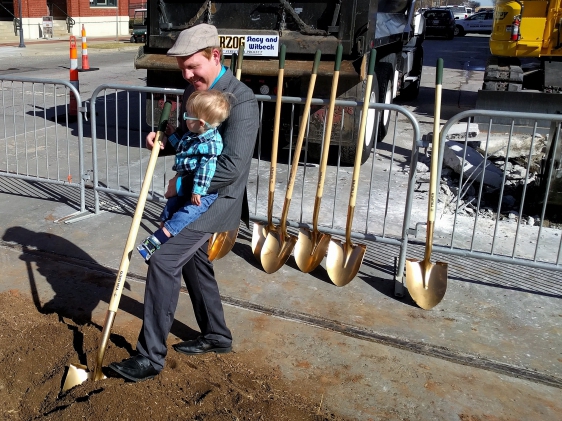
Next steps
Salyer said that EMBARK, Oklahoma City’s transit authority, has plans to carry out an education process for the public on how to share lanes with the streetcars. There will be no dedicated lanes for the two streetcar lines being built.
Michael Scroggins, customer relations manager for EMBARK, described the day as “huge!”
He said that once the project is complete, the contractor will turn over the system to EMBARK to operate.
We asked him how the addition of the streetcar will affect the system.
“It will kind of be a ripple effect,” Scroggins said. “While this is going to be in the heart, I think the city as a whole will feel the pulse throughout the entire city. it’s going to change the way they think about the whole city and public transit.”
Details
Kristy Yager, public information officer for The City of Oklahoma City, provided these key details about the new streetcar system:
- The streetcar will have two route options: a 2-mile Bricktown loop, and a 4.8-mile mainline serving the rest of the central urban core. Click here for a map.
- The OKC Streetcar will serve 22 stops with five streetcars, which ride on rails flush with the street. The streetcars use overhead wires for electric power on part of the route, and batteries for the rest.
- The streetcar will use City streets in the same way as other vehicles, obeying traffic signals and other rules of the road. EMBARK is developing a safety campaign to educate drivers, pedestrians and cyclists how to avoid accidents once streetcar service begins.
- Each OKC Streetcar stop is ADA-accessible for easy boarding with signage, real-time arrival information, covered shelters and a ticket vending machine.
- The project budget is $131 million and includes a storage and maintenance facility already under construction at SW 7th Street and Hudson Avenue.
- Brookville Equipment Corporation is building the streetcars and Herzog-Stacey and Witbeck is building the rail line. Consultants include ADG, Jacobs Engineering, AECOM and SOJ. EMBARK is negotiating a contract with Herzog Transit Services for managing the OKC Streetcar’s day-to-day operations.
You may read more about the streetcar line on the city’s website about the project.
Founder, publisher, and editor of Oklahoma City Free Press. Brett continues to contribute reports and photography to this site as he runs the business.
